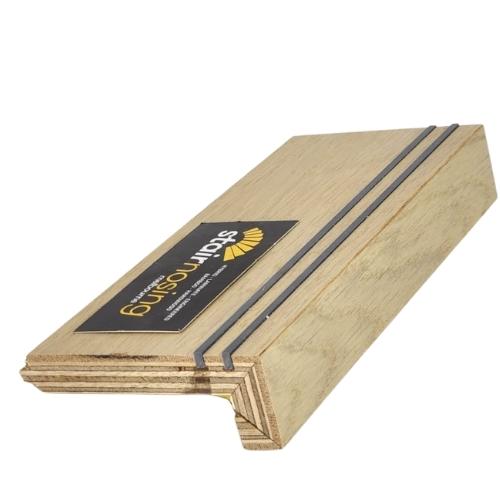Nosing is a type of trim that can be used on steps to protect and cover the edge of your flooring. It also provides a beautiful finish to your stairs.
It can be a simple way to give your staircase an aesthetic finish while minimizing wear and tear from foot traffic. It can be used on both laminate and hardwood floors.
Stairnose Trim
Stairnose trim is a slick way to enhance the look of your stairs and provide a functional edge for your shoes. It also helps prevent stair slips and falls. The best part is that it is relatively easy to install. It will also save you money in the long run.
The best way to do this is to use a stair tread laying tool to place a nosing along the tread of your stairs. Spread a little construction adhesive and insert the stair nose into place. Depending on your stair treads, you may need to add weights or sandbags to get it to sit securely in place.
Its a good idea to measure your staircase to ensure you have the right size nosing for the job. A good rule of thumb is to use about a quarter-inch to a half-inch less than the tread. A stair nosing that is too small will result in your stairs looking as if they were not made out of wood and will make your floors look a lot like wallpaper.

Stair Tread Nosing
The stair tread nosing is the strip of material that projects beyond the riser of a stair. This protrusion is used to improve safety by allowing users more space to place their feet when walking up and down the stairs.
Stair Trim also improves visibility of each step, which helps prevent slips and falls. In addition, Stair Trim can be aesthetically pleasing, depending on the design that is chosen.
Stair Nosing is typically installed as part of new construction, however it may also be added as part of a repair or retrofit. This is a great option for stairs that are located in an area with a lot of foot traffic or that have been exposed to the elements.
There are many different styles of stair nosing to choose from. One of the most popular is a pencil round style, which looks like a pencil that is placed on the edge of the stair tread. This style is most commonly used on modern and contemporary stair designs.
Bullnose Stair Edge
A bullnose stair edge is a decorative trim that gives a rounded edge to countertops, stairs and other architectural elements. It can be used to create a decorative effect or protect surfaces from wind, water and other damage.
For stairs, a bullnose stair edge helps prevent accidents and provide better traction for users. bullnose stair edge can also add a sense of style to the staircase, making it more visually appealing.
Depending on the type of material you use, a nosing can be made from a variety of materials, including wood, metal and rubber. It can also be customized to match the look and feel of your space.
To choose a stair nose, consider its style, safety features and the materials used for the flooring. You should also think about whether you want it to be easy to install and weather-proof.
Once you’ve decided on the type of stair nose, it’s time to measure and cut the pieces. This can be a time-consuming process, but it’s worth it for the final product.
Overlap Stair Nose
Overlap stair noses have a protruding lip that overlaps the floor, generally used on top steps and entryways into sunken living rooms. This helps to protect the stairnose from damage caused by foot traffic and general wear and tear, keeping the stairs looking nice for longer.
Unlike the flush stair nose, an overlapping stair nose can deal with floor expansion and movement better as it hides any expansion gaps that form over time or with weather changes. It also works well with regular steps (i.e., not a first step or a hardwood floor stepdown) because they are much less likely to move, since they’re not connected directly to the wall base with nails or glue.
Both types of noses offer a professional appearance, so they’re often chosen for their aesthetic. Regardless of which type you choose, both should be installed with care and properly nailed down. They’re both very durable and will work equally well when properly done.
